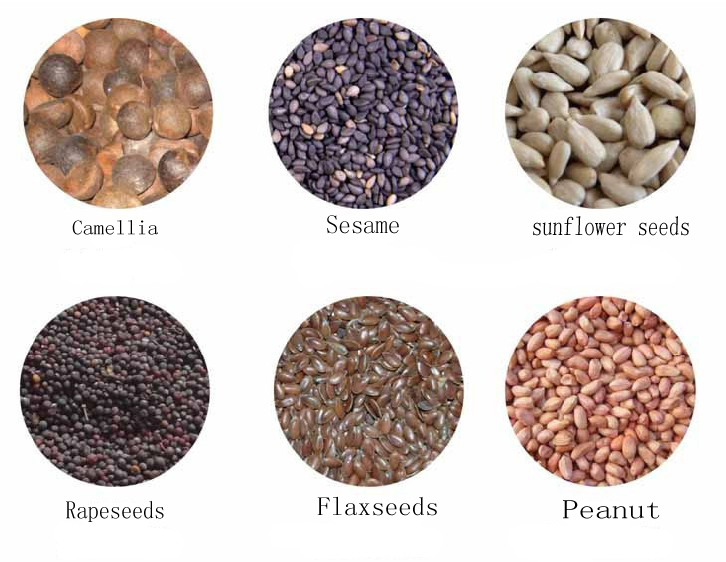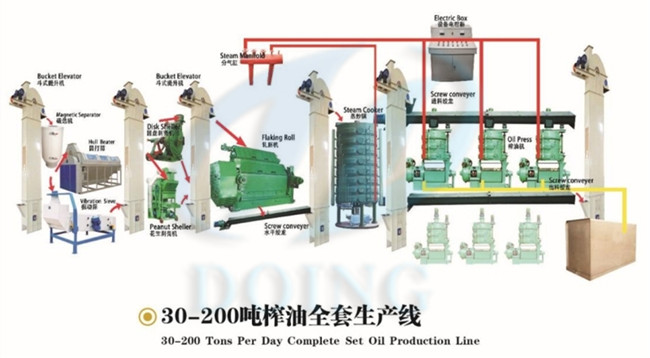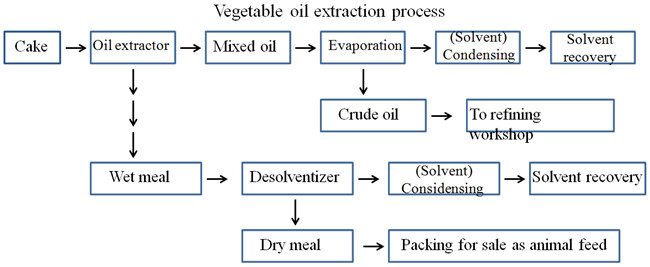Some vegetable oils, such as olive, peanut, coconut and sunflower oils, are cold-pressed. This method, which entails minimal processing, produces a light, flavorful oil suitable for some cooking needs. Most oil sources, however, are not suitable for cold pressing, because it would leave many undesirable trace elements in the oil, causing it to be odiferous, bitter tasting, or dark. These oils undergo many steps beyond mere extraction to produce a bland, clear, and consistent oil.

Oilseeds which can be processed by cooking vegetable oil extraction machine
The heated meal is then fed continuously into a screw press, which increases the pressure progressively as the meal passes through a slotted barrel.

Cooking vegetable oil pressing flow chart

Cooking vegetable oil solvent extraction process
Soybeans are usually not pressed at all before solvent extraction, because they have relatively little oil, but most oil seeds with more oil are pressed and solvent-treated. After the initial oil has been recovered from the screw press, the oil cake remaining in the press is processed by solvent extraction to attain the maximum yield. A volatile hydrocarbon (most commonly hexane) dissolves the oil out of the oil cake, which is then recovered by distilling the light solvent out. In using this machine, flakes of meal are sent through wedge-shaped cells of a cylindrical vessel. The solvent then passes through the matter to be collected at the bottom. The solvent percolates through the matter which is periodically dumped and replaced.